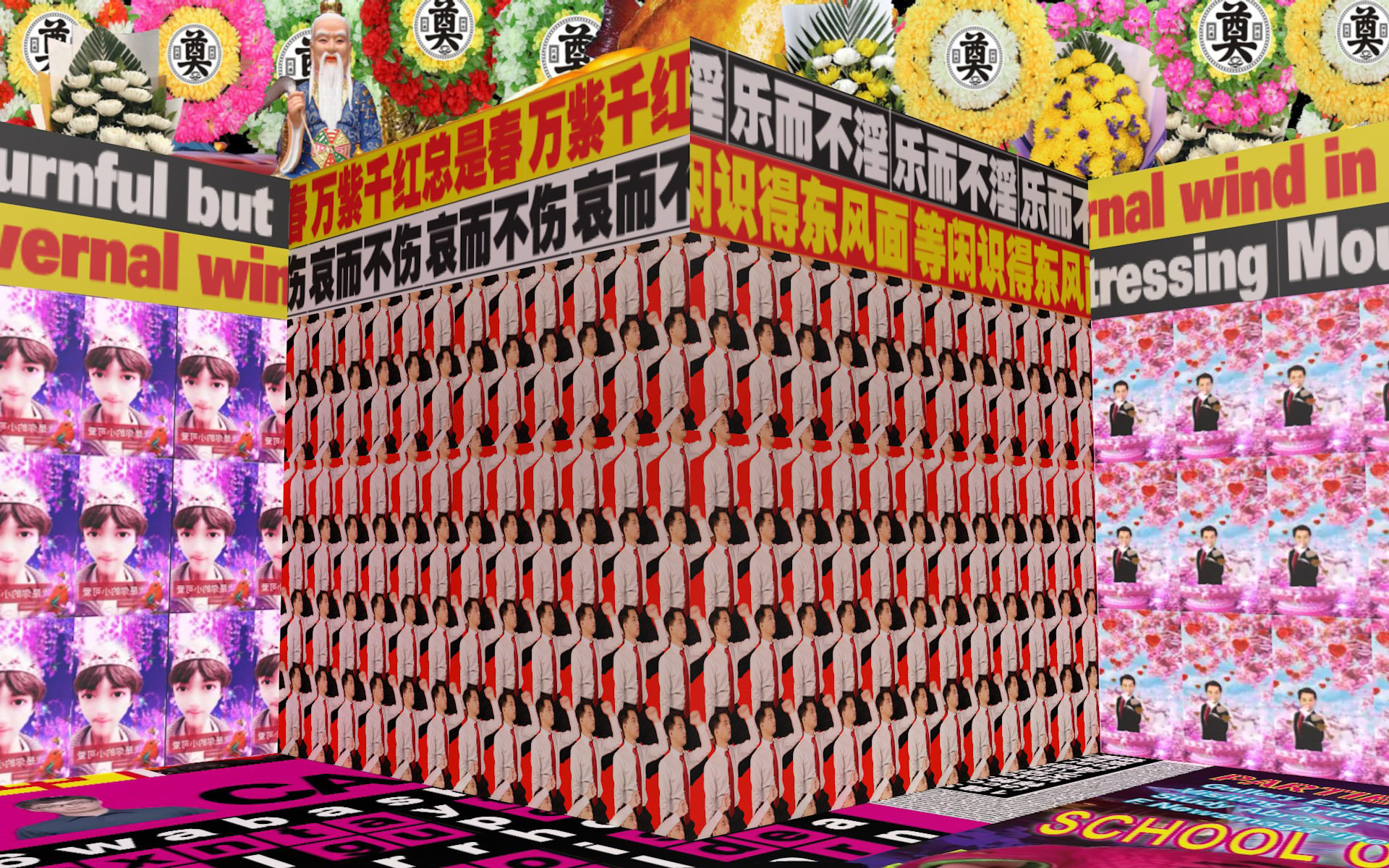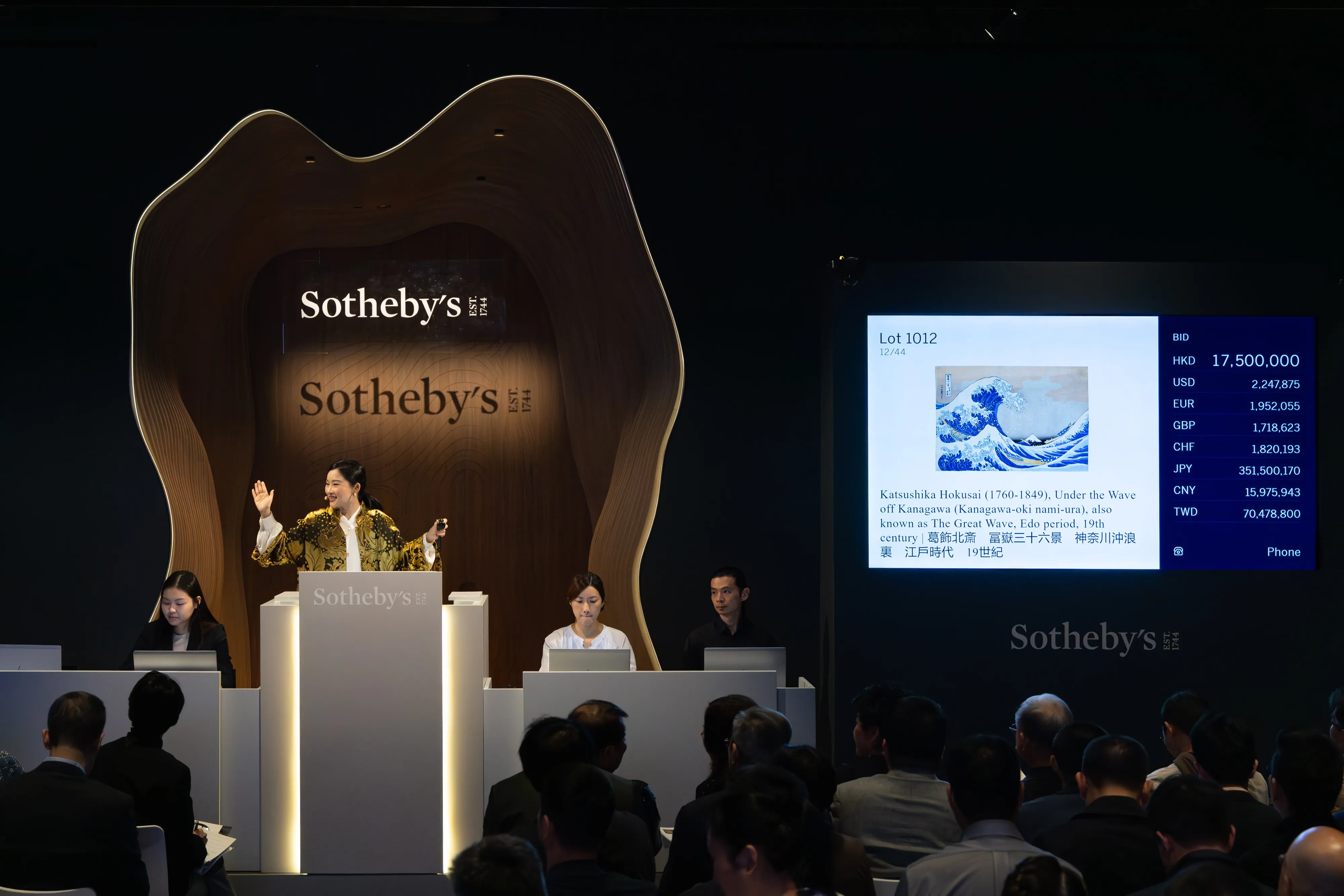China’s Digital Renaissance is a series exploring new currents in Chinese contemporary art, created in partnership with East West Bank. In this article, we meet a generation of young artists harnessing the intersection of futuristic technology and Chinese tradition.
Cyberpunk is certainly enjoying an extended moment in the pop cultural limelight.
Works like Blade Runner 2049 and Cyberpunk 2077 have reignited images of dystopian, East Asian-infused futurescapes in the public imagination (images which are often problematic, given that much of the cyberpunk genre was founded within a mindset of ‘Yellow Peril’).
Now though, a new generation of young artists is capturing a cybernetic future cast through a lens of Asian tradition.

Dabeiyuzhou, nicknamed ‘Oriental Cyborg,’ has already amassed a significant following in China. The digital artist plays with intersections of transcendental beauty and cyberpunk aesthetics. His work constitutes a fascinating, hi-tech exploration of Buddhist iconography.
Another young artist working in the space between traditional art and emerging technology is Du Kun. His series ‘Scores of Landscape’ is reminiscent of traditional Chinese shanshui style painting, while hiding a surprising secret: each element of the landscape corresponds to a sound, which when played together as a video, reveals a melody composed by the artist.
The two artists represent dramatically different aesthetics and mediums, although they share some thematic similarities.
For digital artists in China, the relationship between tradition and modernity, and questions about the role of technology in shaping culture, are driving influences in an ongoing period of exploration.
Where Past and Future Meet
The work of Dabeiyuzhou and Du Kun doesn’t come in a vacuum — futuristic takes on traditional art have been happening for years.
The trend of guochao (or ‘national wave’) saw visual elements from China’s past tapped by domestic brands like Lining, with distinctly Chinese iconography being plastered across everything from streetwear to milk tea.
A more recent iteration of the phenomenon — and one not as steeped in nationalist rhetoric — is the trend of young urbanites combining traditional Chinese clothing with subcultural fashion, yielding a new approach dubbed ‘Neo-Chinese style.’

Traditional culture remains a foundational theme, even for many of China’s most innovative artists, some of whom have mastered traditional techniques, only to extend them via modern technology.
“There are so many great artists in China who are doing contemporary art that’s based on tradition,” Du Kun tells RADII “Xu Bing, for example, who turns English words into Chinese calligraphy, or the papercut work of Lu Shenzhong, or Dou Wei who uses psychedelic music to reinterpret classical Chinese poetry!”

The younger generation’s interest in their own cultural heritage is a product of the times, born from the macroscopic reality of China’s growing importance on the global state, but also from the individual need to find one’s own unique identity in a rapidly-changing, globalist landscape, where ideas and aesthetics clash, mix, and transform at unprecedented speeds.
For Du, tradition is inseparable from the human spirit.

“We don’t normally feel that connection with traditional art and philosophy,” he says. “It’s only when you come into contact with other cultures that you become truly aware of your own.”
Even Dabeiyuzhou’s futuristic ‘Virtual Butterfly Project’ series holds a subtle connection to Daoist philosophy.

“Butterflies hold special significance in Chinese culture,” he says, referencing the famous dream of classical philosopher Zhuangzi. “They’re symbols of dreams, and of fantasy.”
Featuring over three million unique, AI-generated butterflies, the ongoing series reflects on the changing nature of human labor in the context of artistic production.
AI Art and the Human Quest for Expression
In a relatively short period of time, China has become one of the world’s most technologically advanced nations. That rapid and wide-reaching change offers a logical context for the surge of artists exploring the tumultuous intersections of past and future.
Despite his frequent use of Buddhist iconography, Dabeiyuzhou chuckles when asked about faith over dinner.
“I believe in technology,” he says.
Coming from a background in video game design, Dabeiyuzhou has been fascinated by generative AI tools since 2013, first as a way to “free art creation from the burden of human labor,” and then as a way to transcend the boundaries of human imagination altogether.
“I think it’s the artist’s responsibility to explore all the possibilities of art, including the possibilities of the medium itself,” he says.
For Dabeiyuzhou, the process of globalization is hastening the need for some kind of shared language.
“Everything created on a computer is built on a common language of 1s and 0s,” he says. “Technology is the most effective way to tear down the ‘Tower of Babel’ that separates us.”
Du Kun expresses similar hope for technology as a way to blur the lines of cultural differences and national boundaries.
“Now there is no Chinese art, German art, or American art,” he says. “Just art that touches you and art that doesn’t.”
Images via Dabeiyuzhou and Du Kun
















